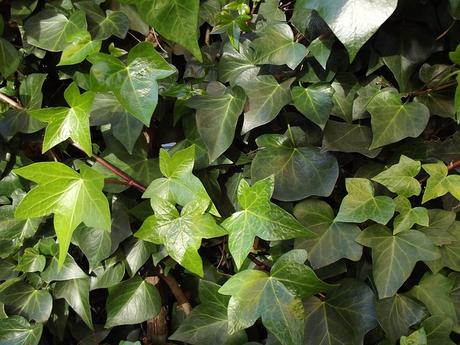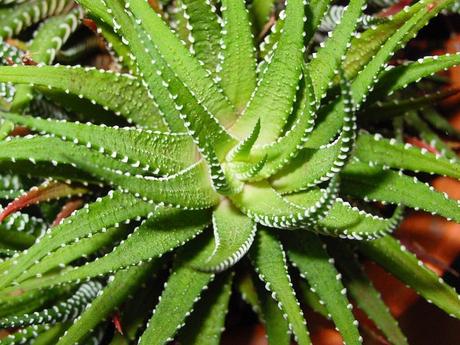Most of us have air conditioners and HVAC systems installed in our homes, right? And many of you, quite rightly, believe that you’re doing a lot of good for your surrounding natural environment by making a contribution towards reducing your carbon footprint and enhancing your sustainable living initiatives by using these cooling and insulating tools to improve the quality of your indoor air. These technologically advanced tools have mostly been optimized to be energy savers and clear the air, if you will, by using eco-friendly mechanisms.
But did you know that there’s an even better and more natural way to keep the air that you breathe inside clean and fresh? Think about this logically for a moment. Also try to remember what your high-school teachers once taught you about the necessary process of allowing green plants to produce their own carbon dioxide. The rest of this article presents you with some magnificent plants that help to improve your indoor air quality.

EPA defines indoor air quality (IAQ) as ,
“Indoor Air Quality (IAQ) refers to the air quality within and around buildings and structures, especially as it relates to the health and comfort of building occupants. Understanding and controlling common pollutants indoors can help reduce your risk of indoor health concerns. Health effects from indoor air pollutants may be experienced soon after exposure or, possibly, years later.”
Here is a list of 25+ houseplants that can help you to improve indoor air quality.
1. English Ivy (Hedera helix) – Ideal for pet friendly homes. It reduces amount of airborne fecal matter. Also absorbs harmful chemicals from cleaning solutions used on appliances, furniture and carpets. Absorbs benzene commonly found in offices.
2. Boston Fern – Popular houseplant that offers both beauty and health benefits. Restores necessary moisture in indoor air. Ideal for those who suffer from dry skin and perfect for cold weather conditions. Helps eliminate traces of formaldehyde.
3. Red-edged Dracaena (Dracaena reflexa) – Remains green throughout the year. At maturity, white flowers bloom, followed by minute red/orange berries. Low maintenance and independent plant which requires little maintenance and care from home user. Effective in absorbing formaldehyde, trichloroethylene and xylene commonly found in varnish, lacquers and gasoline. It is best for high-ceilinged rooms. Although it grows slowly, it can reach up to fifteen feet. But only requires moderate sunlight.
4. Flamingo Lily (Anthurium andraeanum) – Not the easiest plant to grow indoors, but evergreen and always flowering. Also needs plenty of indirect light. Prefers high humidity environments. Effective in removing ammonia, toluene and xylene from home and office.
5. Barberton Daisy (Gerbera jamesonii) – Beautiful plant that prefers lots of water and moist soil. Originally suitable for outdoor use but found to be as effective indoors. Best to keep plant near plenty of natural light. Good for cleansing air of benzene and formaldehyde.
6. Reed Palm – Thrives in shady indoor spaces. Produces small flowers and berries. One of best plants for filtering out benzene and trichloroethylene. To reduce formaldehyde it can be strategically place near or around furniture.
7. Heartleaf Philodendron (Philodendron oxycardium) – A climbing plant which is not pet and children friendly because it is toxic when eaten. Removes an entire variety of toxins in the air. Useful for combating formaldehyde in wood surfaces.
8. Weeping Fig (Ficus benjamina) – Filters out typical pollutants; benzene, formaldehyde, from carpeting and furniture. Extensive care is required for this plant but when said and done with right amount of water and light, it will endure for long time. It remains vulnerable, however, to inconsistent light and temperature fluctuations.
9. Golden Pothos (Scindapsus aures) – Evergreen plant that grows around the world. Ideal as decorative element in hanging baskets. Does not need direct sunlight but soil should be kept moist. Mainly popular because it is easy to maintain.
10. Devil’s Ivy (Epipremnum aureum) – See Golden Pothos.
11. Chinese Evergreen (Aglaonema Crispum) – Provided proper growing conditions present, requires little effort to thrive on its own. And it requires little light in which to flourish. The longer it remains in the room, the stronger it is in removing toxins from the indoor atmosphere.
12. Elephant Ear Philodendron – See Heartleaf Philodendron
13. Janet Craig Dracaena – One of most popular plants from Dracaenas species, it is also able to grow in in darker areas and is effective in its ability to handle dryness.
14. Warneck Dracaena (Dracaena deremensis) – See Janet Craig Dracaena.
15. Garden Mum – NASA-recommended plant for effectively removing ammonia, benzene, xylene and formaldehyde from indoor air. Widely popular and not expensive to source and keep. Can also be used outdoors once finished blooming.
16. Spider Plant (Chlorophytum comosum) – Commonly found plant and easy to grow indoors. Within 2 days reduces up to 90% of toxins in indoor air. Leaves also grow quickly and help reduce mold and allergens. Perfect for people who are allergic to dust. Ideal for home dwellers who are not knowledgeable in care of plants.
This plant is able to thrive on its own with little attention. Also a pet and children friendly plant. It should be considered for use as a decorative element and air cleanser in industrial work areas. Has ability to absorb solvents found in rubber, leather and materials used in printing (paper) industries.
17. Pot Mum – Effective in maintaining humidity levels at stable rates. Helps moisturize dry air. Leaves produce essential negative ions. Effective eliminator of dust, mold spores, allergens and bacteria. Boosts mental health and productivity.
18. Lady Palm (Rhapis excelsa) – Grows up to 6 feet tall. Ideal for thriving in dark corners of home. Can tolerate all temperatures but still need plenty of water. Also needs proper drainage to prevent root rot. NASA-recommended plant for effectively cleansing air of most commonly found indoor toxins.

19. Chrysanthemum (Chrysanthemum morifolium) – Garden Mum part of this group of plant species. Also popular and known as perennial plant by horticulturists. Enjoys direct sunlight but only requires minimal amount of water. Blooms beautifully in variety of colors.
20. Peace Lily (Spathiphyllum) – Improves indoor air quality by up to sixty percent. Reduces levels of mold spores by absorbing them through leaves. Continues to circulate these through roots and used to manufacture own food. Great for bathroom tiles, keeping it free from mildew.
21. Aloe Vera – One of most famous plants for all-round healing abilities. Gel inside plants helps heal cuts and burns. Importantly, it is effective for improving indoor air quality. Useful by-product of conventional cleaners which contain harmful chemicals. Easy to grow as well and a hardy plant which thrives. Also known as plant of immortality having already been in use as a cleansing and health by-product for over six thousand years.
22. Gerbera Daisy (Gerbera jamesonii) – Popular bright flowering plant effective in removing trichloroethylene, a chemical substance usually found in clothing brought back from dry-cleaning. So, this small plant is ideal for bedroom and/or home laundry. Handy as office plant for filtering out benzene found in inks.
23. Snake Plant (Sansevieria trifasciata) – Also known as Mother in Law’s Tongue. Filters out formaldehyde usually found in toilet paper, toiletries and commercial cleaning products. Ideal for bathroom. Also good for bedroom because it absorbs carbon dioxide and releases oxygen at night.
24. Azalea (Rhododendron simsii) – As flowering shrub, effective in combating formaldehyde from plywood and foam. Plant prefers cool temperatures. Recommended to be placed in basement areas but still needs brightness. Plant needs to remain moist in order to flourish and dead leaves need to be removed to prevent disease.
25. Eucalyptus – The Eucalyptus plant can be bit difficult to find in household form but if you can find one, consider adding it to you list of household plants. The scent from these plants can help to lower congestion problems and ward off colds.
26. African Violets – African Violets are purple in color and grow very well in artificial lights so they are perfect for those home who do not have access to direct sunlight. They can help to stimulate adrenaline release and can increase the flow of oxygen to the brain which can help you to relax.
Whether these plants are used specifically to help improve and cleanse indoor air, it should also be remembered that it remains an effective min-green lung within the home. Through necessity, many homes have installed eco-friendly air conditioning (heating and cooling) systems and/or HVAC systems.
But not only are plants great natural alternatives to these instruments, they are effectively energy and cost savers too. No excessive energy use is required through even alternative sustainable sources. There are no maintenance costs either, and it is worth reminding readers that these plants remain versatile and hardy in its ability to thrive naturally on its own.
When sourcing these plants for the first time, always remember to follow the instructions provided by the nursery handler to ensure that they are properly looked after. As was indicated under one listed plant above, also strive to be strategic in where plants can be placed. This enhances its ability to absorb the common toxins mentioned throughout this article. Also don’t forget its aesthetic function. What can be more pleasing than beautifying the home naturally, even cost-effectively, by decorating it with plants?

